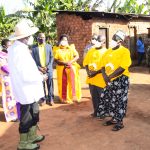Karamoja’s poverty rate has soared to 74.2% (Daily Monitor, May 2025), even though the region was previously listed among Africa’s top tourist destinations (Daily Monitor, January 2021). This contradiction raises a compelling question: Could poverty itself be considered a tourist attraction? Of course not. Karamoja is home to some of Uganda’s and Africa’s most extraordinary natural and cultural assets.
It boasts Kidepo Valley National Park, ranked by CNN (2017) as the third-best safari park in Africa, alongside other significant wildlife reserves such as Pian-Upe, Bokora-Matheniko, and the Lokichar Wildlife Conservancy. The region is adorned with stunning landscapes, including Mount Moroto, Mount Napak, Mount Moruŋole, and Mount Kadam, all of which have been celebrated by Uganda Safari Tours (2024) as among Africa’s most breathtaking wilderness sites.
Fascinatingly, Karamoja holds global paleoanthropological significance: the Napak Hills are home to the oldest ape fossil skull ever discovered, dating back 20 million years—a crucial find in the study of primate evolution (BBC, August 2, 2011). In addition to its natural heritage, Karamoja’s rich cultural traditions, vibrant expressions, and unique system of traditional governance make it an authentic cultural reservoir. One might still wonder how a sub-region almost the size of Belgium, with such exceptional potential, remains at the bottom of Uganda’s development index.
Scholars and observers alike have consistently highlighted Karamoja’s history of marginalization and neglect (Mamdani, 1982; KRSU, 2019; M. Ssebunya et al., 2012). The Food and Agriculture Organization (2023) also acknowledges the limited local voice in poverty alleviation efforts. Despite multi-faceted interventions, the region continues to register minimal socio-economic progress. This paradox—where Karamoja makes global tourism headlines while topping poverty statistics—demands deeper reflection.
In a meeting with the Tourism Officer of Moroto District, it was revealed that less than 3% of the district budget is allocated to tourism, and even this is inconsistently disbursed. Similarly, the District Community Development Office (DCDO) of Nakapiripirit confirmed that the district receives less than UGX 250,000 (approx. $66) per quarter for cultural and tourism-related activities.
The situation is even more dire at the community level. During an engagement with the Kautakou Cultural Group—one of Napak District’s most frequently visited tourist groups—members shared that they save just UGX 1,000 ($0.27) per week to craft traditional artifacts and diversify their cultural presentations.
It is disheartening to note that the Karamoja Cultural Commemoration, now Uganda’s leading cultural tourism event, is under threat due to inadequate funding (The Independent, August 2024). The 10th edition, scheduled to be held in Nakapiripirit District in September 2025, is expected to attract over 20,000 visitors under the theme: “Preserving Our Cultural Identity and Diversity.”
This reflection is particularly timely, as Uganda pursues the objectives of National Development Plan IV (2025–2030): increasing household incomes, promoting full monetization, and achieving employment for sustainable socio-economic transformation.
To “kill two birds with one stone,” I strongly recommend that the government and development partners deliberately invest in Karamoja’s cultural and tourism sectors. Such an approach will not only build local capacity to manage and benefit from natural and cultural assets, but also enhance the region’s economic competitiveness, leading to inclusive and sustainable development.
By LOWALEM Daniel, Director, Ateker Development Organization (ATEDO), an indigenous, learning and development organization in Karamoja. (atedoyok@gmail.com)





















Beautiful piece